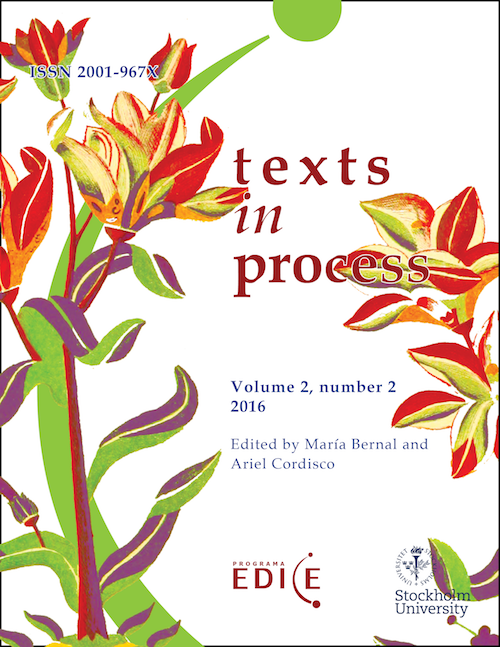Enunciation and argumentation: proposals for the analysis of personal forms as argumentative resources in orality
Abstract
As part of an investigation about strategies and resources for the construction of social representations (Raiter, 2016) on orality, we propose to articulate an analysis of linguistic forms with the argumentative dimension of utterances. The aim of this paper is to review the methodology proposed by Lavandera (1984) for the analysis of the tension between the personal and the impersonal, interpreting the use of this dimension as an argumentative resource (Ducrot, 1984). From our interdiscursive perspective, we seek to show how the characterization of the enunciative roles can facilitate analysis of the positions of enunciation from which the meaning of statements is oriented (Guimarães, 1998). To this end, we will analyse three fragments of an interview by applying the study of the distribution of pronominal forms (Lavandera, 1984) and the argumentative chains (Ducrot, 1984). We believe that analysis as described from the perspective of discourse analysis will mean a contribution for future work on strategies for building social representations.
Downloads
References
Benveniste, E. (1989). Problemas de lingüística general, 2 t., México: Siglo XXI.
Briggs, C. (1986). Learning How to Ask: A Sociolinguistic Appraisal of the Role of the Interview in Social Science Research. Cambridge: Cambridge University Press.
Courtine, J.-J. (1981). Análisis del discurso político (el discurso comunista dirigido a los cristianos). Accedido desde http://www.magarinos.com.ar/courtine.htm, por última vez el 22 de agosto de 2016 a las 17:00 horas.
Ducrot, O. (1984). El decir y lo dicho. Buenos Aires: Hachette.
Ducrot, O. (1988). “Argumentación y topoi argumentativos”, en B. Lavandera (ed.) Lenguaje en contexto 1, 1-2, Buenos Aires, 63-84.
Lavandera, B. R. (1984).Variación y significado (1. ed). Buenos Aires: Hachette.
Labov, W. (2013). The Language of life and death. The transformation of experience in oral narrative. Cambridge: CUP.
Orlandi, Eni (2012). Análisis del discurso. Principios y procedimientos. Santiago de Chile: Editorial LOM.
Pêcheux, M. (1978). Hacia el Análisis automático del discurso. Madrid: Gredos.
RAE, & AALE. (2009). Nueva gramática de la lengua española (Vol. Sintaxis II). España: Espasa Libros S.L.U.
Raiter, A. (2016). “Capitulo 1. Representaciones sociales”. En Al filo de la lengua. Medios, publicidad y política. Raiter, A. y Zullo, J. (Comp.) Argentina: La Bicicleta Ediciones. Pp. 15 – 35.
Zullo, J. (2015). Piquetes y piqueteros en la prensa argentina (1996-2002). Argentina: La Bicicleta Ediciones..
Zullo, J. (2016). “Capitulo 2. El análisis del -discurso. Algunos supuestos, algunas herramientas de trabajo”. En Al filo de la lengua. Medios, publicidad y política. Raiter, A. y Zullo, J. (Comp.) Argentina: La Bicicleta Ediciones. Pp. 37 – 59.

Copyright (c) 2016 Federico Testoni

This work is licensed under a Creative Commons Attribution 4.0 International License.
Texts in Process (TEP) is a non-commercial open-access scholarly journal governed by a Creative Commons Recognition 4.0 International license. It follows a full and unrestricted open access, without charges or fees for shipping, reviewing, processing and publishing articles. Users can read, download without registering, distribute, print or link the complete texts of numbers and articles, without the permission of the editors or authors. There is also no charge to publish (APCs), being applicable to the entire editorial process. The authors retain their intellectual rights at all times.
ASICE-EDICE Programme has always believed that non-commercial, open, unlimited and unrestricted access to specialized academic publications is a vehicle for academic freedom and scientific rigor. It adheres and shares the Declaration of Mexico and DORA to guarantee the protection of academic and scientific production in Open Access.
















